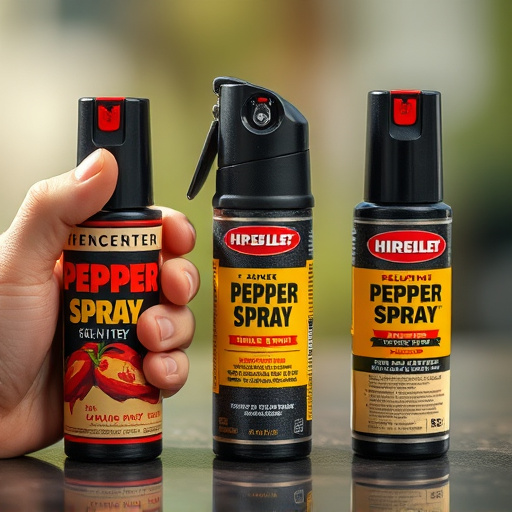Pepper spray manufacturers create intricate formulations combining capsaicin with additives to enhance performance for law enforcement, ensuring temporary incapacitation of assailants through controlled pain and irritation. Their expertise balances potency and safety under stringent global regulations, focusing on mitigating risks from oleoresin capsicum (OC) while optimizing effectiveness as a non-lethal force option. Close collaboration with police departments and adherence to industry standards make them vital contributors to public safety, providing reliable and safe pepper spray compounds tailored to diverse law enforcement needs.
“Unraveling the power behind police-grade inflammatory pepper spray requires a deep dive into its compound composition, manufacturing processes, and safety standards. This article explores the intricate details, from understanding the active ingredients that make up these powerful tools to examining the critical role played by reputable pepper spray manufacturers in law enforcement. We’ll also delve into the stringent regulatory landscape surrounding production, ensuring both effectiveness and user safety.”
- Understanding Pepper Spray Compound Composition
- The Role of Pepper Spray Manufacturers in Law Enforcement
- Safety Considerations and Regulatory Standards for Pepper Spray Production
Understanding Pepper Spray Compound Composition
The composition of pepper spray compound is a closely guarded secret among leading pepper spray manufacturers. These formulations typically consist of capsaicin, the active ingredient found in chili peppers that causes the burning sensation, combined with various additives designed to enhance its effectiveness and user experience. Capsaicin alone can be unpredictable, ranging from mild to extremely potent, so these additives play a crucial role in ensuring consistent performance.
Pepper spray manufacturers carefully balance these components for optimal effect, considering factors like dispersion, evaporation rate, and residual effects. The result is a powerful yet controlled substance that temporarily incapacitates an assailant by triggering intense pain and irritation in the eyes, nose, and respiratory system. Understanding these intricate compositions allows law enforcement agencies to make informed decisions when selecting pepper spray for their officers, ensuring they have the best possible tools for public safety.
The Role of Pepper Spray Manufacturers in Law Enforcement
Pepper spray manufacturers play a crucial role in law enforcement, providing essential tools for police to maintain public safety and order. These manufacturers specialize in developing, producing, and supplying various types of pepper spray compounds, each designed with specific grade levels tailored for different law enforcement needs. The quality and effectiveness of their products are paramount, as they directly impact the ability of officers to control and de-escalate volatile situations swiftly and safely.
Pepper spray manufacturers collaborate closely with police departments and other agencies to understand evolving requirements and standards. They continually innovate, refining compounds for improved efficacy against various physical and chemical challenges. Additionally, these manufacturers ensure their products meet stringent safety and quality control measures, adhering to industry regulations. Their expertise in formulation science enables them to create safe yet potent agents that minimize collateral damage while maximizing effectiveness on the field.
Safety Considerations and Regulatory Standards for Pepper Spray Production
The production of pepper spray involves a delicate balance between efficacy and safety, with regulatory standards in place to ensure its responsible manufacturing. Pepper spray manufacturers must adhere to stringent guidelines to protect both consumers and law enforcement officers from potential harm. These standards cover various aspects, including ingredient selection, concentration levels, and packaging design. The primary focus is on minimizing risks associated with the active ingredient, oleoresin capsicum (OC), while maximizing its effectiveness as a non-lethal force option.
Regulatory bodies worldwide implement strict measures to govern pepper spray production. These include setting maximum OC concentrations, specifying safe handling procedures, and mandating clear labeling and user instructions. Compliance with these standards ensures that pepper spray manufacturers produce reliable and safe products. It also encourages innovation in formula development, allowing for the creation of more potent yet safer compounds, catering to the evolving needs of law enforcement agencies and public safety professionals.
Pepper spray, a powerful tool for law enforcement agencies, is comprised of specific chemical compounds designed to incapacitate temporarily. The role of pepper spray manufacturers is pivotal in providing effective solutions to police forces worldwide. These manufacturers must adhere to stringent safety considerations and regulatory standards to ensure the production of high-quality, safe, and reliable pepper spray compounds. By understanding the composition and implementing robust quality control measures, they contribute significantly to public safety while respecting ethical guidelines.
